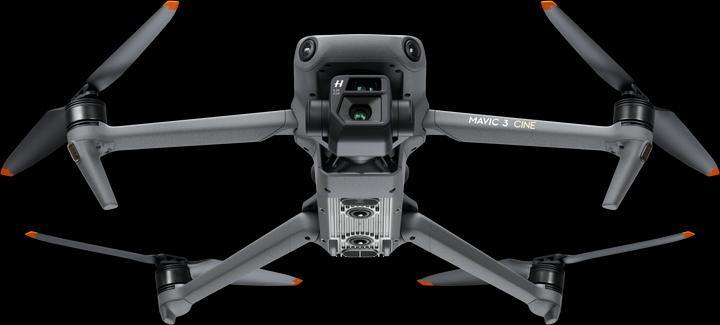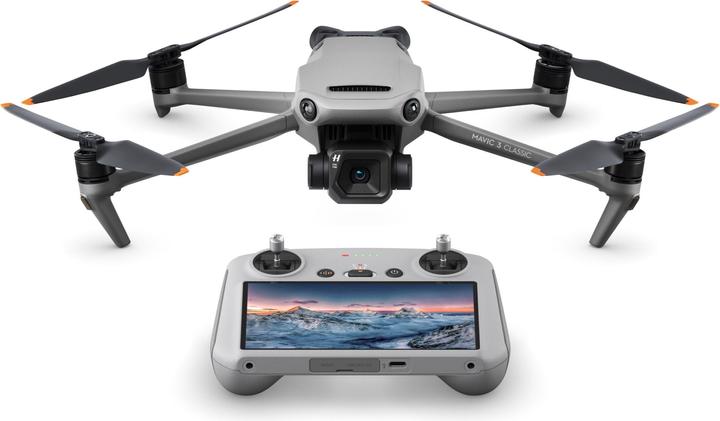

New drone regulation: lighter is easier
In addition to various simplifications in the regulations, drones under 250 grammes have one main advantage: they’re future-proof. It’s still unclear what will happen to the heavier models from 2024.
As of 1 January 2023, EU regulation of unmanned aircraft systems (UAS) will also apply in Switzerland. This changes a number of regulations for operating drones outdoors. The regulation doesn’t apply to indoor use.
I won’t go into the details of the provisions in this article. You can find the necessary information on the drone pages of the Federal Office of Civil Aviation (FOCA) and in the online training course, which is mandatory for all pilots of drones weighing 250 grammes or more. It’ll teach you everything you need to know.
And that brings me to the topic of this article. Namely that it makes a big difference in terms of regulation whether you buy and fly a drone weighing up to 250 grammes or you have a heavier device.
Mandatory registration
In most cases, you have to register as a pilot, even with a light drone. Exceptions are those under 250 grammes that have neither a camera nor a microphone. In legal jargon: aircraft that do not have «sensors for recording personal data». Drones like this one, for example:

Online training and exam
For all drones weighing 250 grammes and above, you have to do an online training course with a test at the end. You’ll find access to both of them once you’ve registered and logged into the UAS-Portal. The training will teach you everything you need to know about drone regulation: for example, where you are allowed to fly which drones, what to do in the event of damage, general safety and legal information and transitional rules.
Neither the training nor the test is mandatory for drones under 250 grammes. In my opinion, though, it makes sense to do both anyway because numerous rules also apply to light drones, and you should know them. The training and test are free.
Liability insurance
For every flight with a drone weighing more than 250 grammes, you need liability insurance of at least one million francs. This isn’t the case with lighter models, but I still recommend that you take out liability insurance. It’s not expensive and can protect you from big issues and costs. If you have household insurance with liability, find out if it covers drones.
Safety radius at airports
Drones weighing 250 grammes or more must maintain a safety radius of 5 kilometres around airports and airfields. This doesn’t apply to mini drones. However, you shouldn’t fly in the immediate vicinity of planes that are taking off or landing – that’s just common sense.

Source: David Lee
Other no-fly zones, such as nature reserves, also apply to even the lightest multicopters.
Future-proof
Finally, there’s one more difference: drones weighing less than 250 grammes can also be flown without strict restrictions from 2024. This isn’t definite for heavier drones.
The reason for this lies in their class markings. In the future, drones that are new to the market will be assigned a class. This in turn determines the operating class and which safe distances you have to maintain from bystanders.
C0: up to 250 grammes -> operating class A1
C1: 251 to 899 grammes -> operating class A1
C2: 900 to 3,999 grammes -> operating class A2
C3 and C4: 4–25 kilogrammes -> operating class A3

Source: David Lee
The problem lies in the word «future». Most of the drones currently on the market don’t yet have a class marking. It’s possible that they’ll receive one retrospectively, but it’s by no means certain. According to the FOCA, it depends on whether the manufacturer is striving for one. And also whether it’s technically possible, because there are criteria that have to be met other than weight. Custom drones will also never have a class marking.

Source: Samuel Buchmann
Drones without a class mark are governed by separate rules. A distinction is made here between the transition period up to 31 December 2023 and afterwards. During the transition period, multicopters will be
divided into the previous Swiss categories’ weight classes of up to 500 grammes, up to 2 kilogrammes and up to 25 kilogrammes. From 1 January 2024, there will only be two transitional categories: under 250 grammes and 250 grammes up to 25 kilogrammes.
For example, at 595 grammes, the DJI Air 2S would currently be subject to the same restrictions from 2024 as the 9-kilogramme DJI Matrice 300 RTK, which is intended for professional use. Operational category A3 would apply to both, which dictates that you must maintain a distance of 150 metres from residential, commercial, industrial and recreational areas. Every self-made drone over 250 grammes also falls into this category.
If the Air 2S subsequently receives a class marking, it can permanently be flown in category A1 under the new regulations. In other words, it doesn’t have to be a problem, but it can be.
Drones weighing less than 250 grammes, on the other hand, are future-proof. They can be flown in category A1 for an unlimited period of time.
Purchase recommendation: classified or under 250 grammes
Due to the uncertain situation, I wouldn’t currently recommend buying an unclassified drone weighing over 250 grammes. If you need a heavier drone, wait until there’s a suitable class-marked model.
The DJI Mavic 3 Classic is the first drone to come with the C1 class marking. The previously released Mavic 3 and Mavic 3 Cine can retrospectively obtain C1 class status, enabling them to fly in the A1 operating class after 2024.
In addition, a good range of light drones has emerged in recent years. If you have a big budget, I recommend the very good DJI Mini 3 Pro – the version with RC remote control – which works without a smartphone. If you want to spend less, the DJI Mini 2 is a good choice.
By the way, my colleague Samuel Buchmann recently tested the DJI Mavic 3 Classic and the DJI Mini 3. You can find out more about them both in his article.
Header image: Samuel BuchmannMy interest in IT and writing landed me in tech journalism early on (2000). I want to know how we can use technology without being used. Outside of the office, I’m a keen musician who makes up for lacking talent with excessive enthusiasm.






